78 Years Ago Today
Dawn was already rising with Double Wartime Dalight Savings at 0200, June 6, 1944, to reveal cloudy skies from horizon to horizon. The rumble of 48 Pratt and Whitney R-2800s reverberated across the quiet English countryside that surrounded the former RAF station of Beaulieau Roads, between Southampton and Bournemouth, which was now home to the 9th Air Force's 365th Fighter Group, known as the “Hellhawks.” On the taxiway, the big P-47s, each resplendent in the black and white identification stripes hurriedly applied with mops and brooms by the ground crews two nights before, S-turned under their heavy loads of two 500-lb bombs on the wing shackles and a 110-gallon drop tank on the centerline mount as they taxied toward the runway in the growing dawn light.
At the runway, the flagman checked each pair as they moved into position. The engines roared as the pilots advanced their throttles to takeoff power, then started their takeoff roll as they were waved off. Number Eight of the sixteen P-47s of the 388th Fighter Squadron was 21 year old 2nd Lieutenant Archie Maltbie, who had arrived in the squadron three weeks earlier and for whom this was his first operational mission. Maltbie ran his hands over his wool pants to dry his sweating palms, then pulled on his flying gloves. The two airplanes ahead moved into position and took off. The ground crew signaled Maltbie and his element leader to move forward. Once on the runway, he checked the engine instruments, worked the controls quickly in a last-minute check, and pushed the throttle forward when the checkered flag came down. Halfway down the runway, the Thunderbolt's tail came up, and then he was airborne as the main gear thumped into the wells. A right turn brought the two Thunderbolts over the Isle of Wight in a matter of moments. They joined the rest of the formation as the fighters circled until all had joined up, then the formation headed east across the English Channel toward the coast of Normandy.
"I'll never forget what it was like that day. There were so many airplanes in the sky that there was a serious risk of collision, and there were so many ships in the Channel it seemed that you could have walked from ship to ship from England to France." The assignment for the 365th Fighter Group that day was to patrol the Cotentin Peninsula, to block any Luftwaffe aircraft that attempted to attack the invading American forces at Omaha and Utah Beaches and attack any enemy ground units spotted. After an hour, the Thunderbolts were free of their bombs and most of their ammunition. Returning to base, the pilots told the excited ground crews what they had seen. After a quick meal, they were back in their planes for a second sweep of the beachhead. "We thought that was it for the day when we got back from the second mission, but all of a sudden there was a call that radar had picked up the Luftwaffe heading toward the beaches, and all the airplanes that had been fueled were scrambled. There were no Germans around by the time we got there." When they returned, night had fallen on England. "It really was the longest day I can ever remember."
During the weeks following the invasion, the pilots of the 365th would average a mission a day, regardless of the weather; this was far more than the two to three missions per week the unit had flown in the weeks leading up to the invasion. "The breakout from St. Lo was the greatest massing of airpower I ever saw. First, practically the entire Eighth Air Force struck the German lines, and it seemed like forever that we were orbiting off to the side waiting for all those bombers to fly over the target. They had divided the roads behind the front into grids, with a squadron of fighter-bombers assigned to each. As soon as the heavies turned away, we bombed and strafed every square inch. It was incredible to think that anyone could have survived under that."
The breakout from St. Lo effectively ended the Battle of Normandy as General George S. Patton's Third Army was sent east in an attempt to cut off the retreating German army by linking up with the British and Commonwealth armies advancing from the northern sector. Realizing they were being cut off, the Germans fought harder to maintain an escape route, and managed to prevent the meeting of the two armies, holding an area around the town of Falaise that would become known to history as "The Falaise Gap." For ten days, Allied fighter bombers from the USAAF and RAF struck the German forces relentlessly from dawn to dark. "After the third day, you could smell the stench of death in your cockpit, even at high altitude, before you got there. All those men, and the horses and other animals they used to pull the carts, all the equipment that was burned up. It was a smell you could never forget." As British Typhoons rocketed the German panzers, American P-47s divebombed the convoys and strafed everywhere. "You almost felt sympathy for the Germans trapped down there."
Over the next eleven months, the Allies would take more casualties killed and wounded as they battled across France, the Low Countries and into Germany itself than had been incurred in the previous five years of the war in Europe.
Archie Maltbie would fly on through the rest of the war, promoted to the rank of Captain in March 1945 and becoming the squadron's operations officer. "On May 8th, 1945, when we got the word it was over, I was in the squadron operations tent. I looked over at the roster board, and of the thirty-six pilots assigned to the 388th Fighter Squadron, there was me and two others who had flown the D-Day missions. All the others I'd crossed the Channel with that morning were gone. Ten had finished their tours and made it home. The rest had been shot down, dead or prisoners."
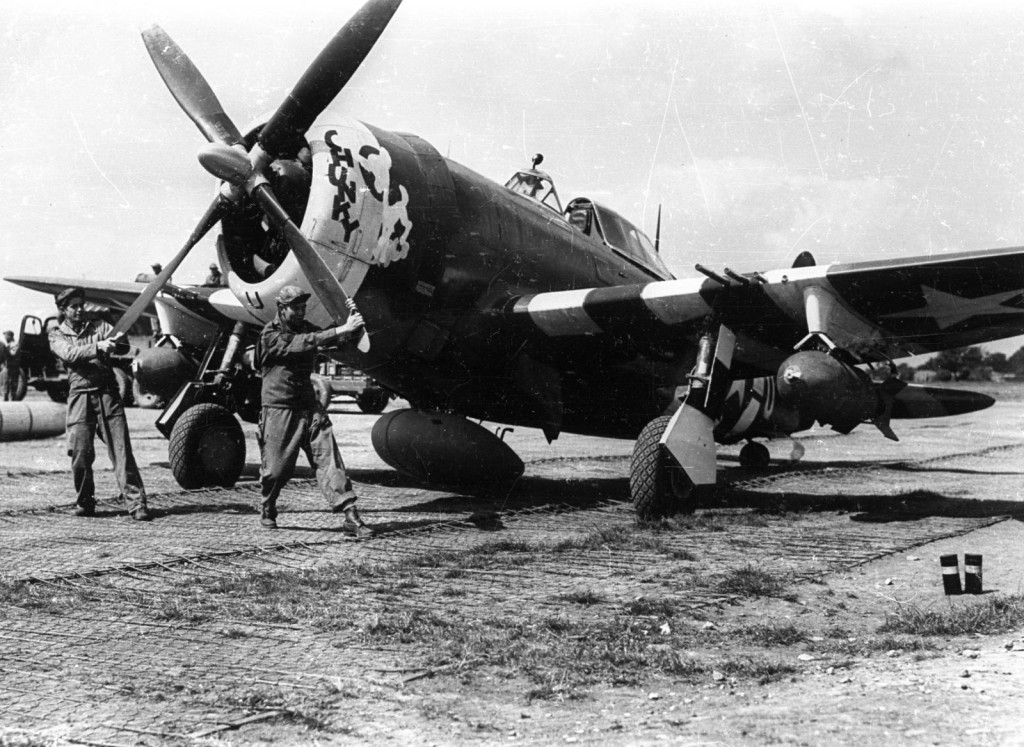
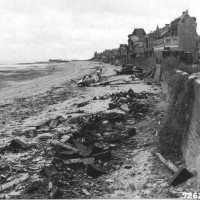
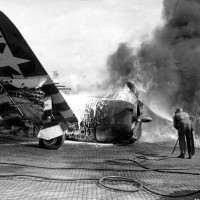

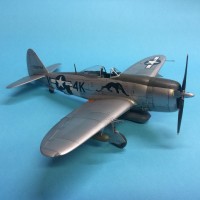
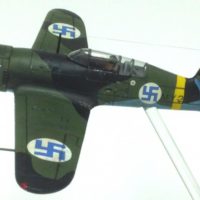
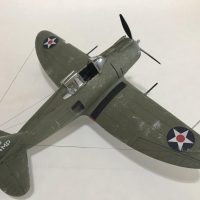
Thanks Tom.
Thanks for sharing, Tom @tcinla
Thanks for sharing, Tom!
One, when is the book coming out? Two, when is the script coming out? followed by the movie.
I could picture each scene with my minds eye and unfortunately we boomers and the forgotten survivors of
the war are some of the last generation to be touched by this war.
I read some ware that the Vietnam war over 2/3rd of the Vietnamese weren't even born during the conflict many of the current generations have no memory of the events that shaped their country. The same holds true for many folks in the states. I'm sure that a motion picture or Hulu or a Hanks type of presentation would better serve and remind the younger generations. It would hold more value than Top Gun and be more historical and relevant.
Good writing and a good reminder as always TC.
@tcinla - thanks for that piece of jug history and "The Falaise Gap".
Excellent as usual @tcinla. We owe all we have today to the brave men and women who fought and won that war. May they, and their sacrifices never be forgotten.
Your line "Archie Maltbie would fly on through the rest of the war, promoted to the rank of Captain in March 1945 and becoming the squadron’s operations officer" , this really brings out the attrition rate and the quick promotions that must have been a necessity to keep the war running. I had this thought in my had as you summed it up in the following sentence. Well written as usual, Tom.
As a matter of fact, between D-Day and V-E Day, most Allied units in the Army and tactical air went through more than 100% casualties.
I was in the US 3rd Infantry Division in Germany back in the late ‘70’s and one of the factoids they mentioned in orientation was that they suffered over 300% casualties in WW2, the most in the US Army. Given that a WW2 US Infantry Division had about 17000 troops,
That works out to be ~51000 killed and wounded. The lions share of those casualties came from the ~9000 line combat troops.
I know casualties are inevitable but I never understood how that was a point of pride, seemed to me to be an admission of inept leadership and bad tactics.
It was just a very bloody war across Europe. Read Stephen Ambrose's book "Citizen Soldiers" about those 11 months between D-Day and VE-Day - it's an excellent one-volume introduction to that. Like I said, Allied casualties that final year were more than the five years previous in Europe. The German Army may have been defeated, but it was a tough outfit that fought to the end.
To never forget. I used to host D-day parties each year when I lived in Marin.
People wondered what it was about and I advocated freedom. We played big band Music . People got it, once they knew what the stakes had been